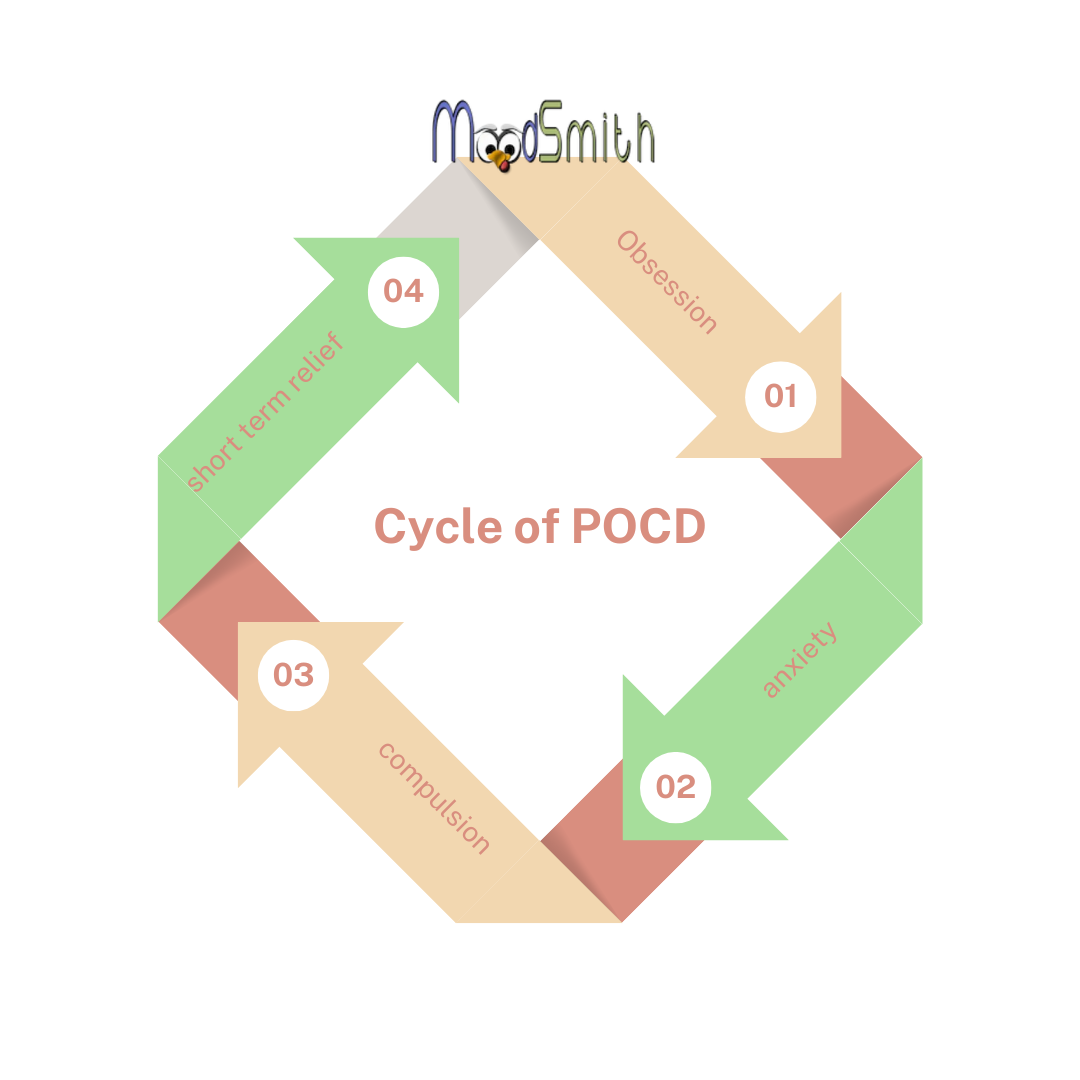In my last article I was talking about the obsessions within POCD and today I want to talk about the compulsions, as without compulsions, your POCD loses it’s power, as it is the compulsions that keep it, and indeed all forms of OCD going. You might have come across the phrase before – the OCD cycle and this simply refers to how you get
a distressing thought – which makes you anxious – and you do something to lower your anxiety.
The NHS helpfully calls this three main elements
If we translate that into OCD language, you get an obsession- which makes you anxious – and you perform a compulsion to get relief.1 And to be very specific, in terms of POCD you might think you were looking at a child inappropriately – feel sick and disgusted – and decide to stay away from children. If you want to be rid of POCD, you need to find a exit from the cycle and that exit begins with understanding compulsions.

I am going to run through some scenarios that I have come across in private practice will working with individuals with POCD as I think they shall help you to recognise what exactly constitutes compulsions.
You find yourself meticulously planning your day to avoid any possibility of encountering children. This might involve intricate plans that go out of your way to bypass schools or playgrounds, and you do this to avoid the thoughts and feelings that disgust you.
A worked with a young mother several years ago who was terrified about her own behaviour around children. She analysed every interaction, every word spoken, every glance, searching for any hint of something inappropriate. Her POCD was so entrenched she was developing false memories of things that never happened.
Some people I’ve worked with describe engaging in almost constant mental rituals. This might involve repeating certain phrases in their mind, counting to specific numbers, or trying to replace intrusive thoughts with ‘safe’ images. These mental gymnastics offer a temporary illusion of control, a way to try and neutralise the anxiety.
And of course, there’s the seeking of reassurance, which can take many forms. It might be repeatedly asking loved ones for confirmation that you’re a good person, or perhaps scouring the internet for information that validates your experience and alleviates the fear. This reassurance-seeking provides a temporary sense of safety, but it can also become a crutch, preventing you from developing your own internal sense of security.
The difficulty with all of these compulsions, however well-intentioned, is that they prevent us from learning that the anxiety will naturally subside on its own. They keep us stuck in a cycle of fear and avoidance. That’s why Exposure and Response Prevention (ERP) can be so powerful. By gently and gradually facing our fears without engaging in compulsions, we learn that we can tolerate the anxiety, that it won’t last forever, and that we don’t need those rituals to cope.
Now, it’s important to remember that tackling compulsions head-on can feel daunting, and working with a therapist experienced in ERP is often the best approach. But there are some small experiments you can try on your own to start gently challenging those compulsions. Perhaps, instead of meticulously planning your route to avoid a particular place, you could try taking a slightly different path that brings you a little closer to the area you typically avoid. Notice what happens. Pay attention to the anxiety, how it feels in your body, and see if you can sit with it for a few moments without engaging in a compulsion.
Or maybe you could choose to watch a film or television programme that includes children, something you might usually avoid. Again, notice the thoughts and feelings that come up. See if you can resist the urge to engage in mental rituals or seek reassurance. It might feel uncomfortable at first, but with practice, you can start to build up your tolerance to these situations and learn that the anxiety will eventually decrease.
These are just a couple of examples, and it’s crucial to go at your own pace and seek professional support if needed. If you’d like to read more about how exposure and response prevention works, please see my guide which shows you how to do ERP Remember, recovery is a journey, not a race. Be patient with yourself, celebrate the small victories, and know that with persistence, you can reclaim your life from the grip of compulsions.
It might feel uncomfortable at first, but with practice, you can start to build up your tolerance to these situations and learn that the anxiety will eventually decrease.
But how do you actually resist that urge to engage in mental rituals or seek reassurance? It’s not easy, but there are some things you can try. One helpful technique is to acknowledge the thought or urge without engaging with it. You might say to yourself, “I’m having the thought that…”, or “I’m noticing an urge to…”. This creates a little bit of distance between you and the thought, reminding you that it’s just a thought, not a reality.
Then, try gently shifting your attention to something else. This could be focusing on your surroundings, engaging in a simple activity like listening to music or doing a puzzle, or even just taking a few deep breaths and noticing the sensations in your body. The key is to find something that can hold your attention and help you step away from the mental battle.
